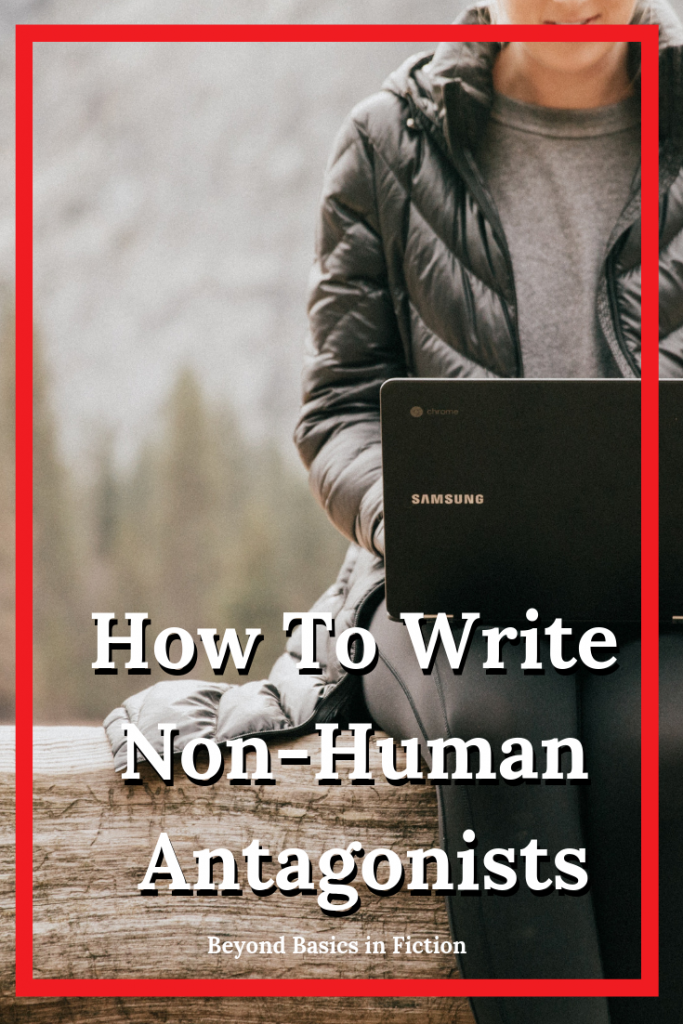
How do you write action scenes that keep readers leaning in, holding their breath, and cheering for the character to win no matter how impossible it looks? Put the reader IN THE ACTION by writing in deep point of view!
Know The Why Of The Action Scene
Just like in every other kind of scene written in deep point of view, know the why for your point of view character (POVC). Why are they fighting right now? Most people take quite a bit of nudging before they’re pushed far enough to take a swing at someone.
The WHY of an action scene must be specific to that character in that moment. The WHY should give the reader insight into the POVCs motives, their character, their priorities, their passion, etc. All fight/action scenes should move the story or the emotional plot ahead. If you can remove that scene without changing the story, it’s not essential. Only essential fight/action scenes get to stay.

Emotions In Action Scenes
Remember, primary emotions are the instinctive, knee-jerk, unthinking emotional responses we have to things. What mix of primary emotions are at play for your character in this action scene? That mix may trigger the fight, flight, or freeze response if there’s danger or threat perceived, or it could trigger a secondary emotion — where there’s a thinking response — TO DO something — with the primary emotions at play.
In action sequences this process must happen fast *snaps fingers* to keep the tension high and the pace moving. Let’s have a look at an example:
“Reacher chose the path of least resistance. He ducked his head and let the punch scythe through the empty air above it. Then he bounced back up, and launched to his feet, and twisted, and used his falling-backward momentum to jerk his elbow into the guy’s kidney, which was rotating around into position just in time. It was a good solid hit. The guy went down hard. Reacher fell back in his chair and sat there like absolutely nothing had happened.”
Lee Child, The Midnight Line, ch 3
So, we have Reacher in a situation that’s escalated to violence. I haven’t included the primary emotions here, but Reacher’s already placed his scarred giant-sized left fist on the table, and then the even bigger more-scarred right fist beside it in a failed attempt to intimidate.
Reacher’s watching the guys around him for tension, for anything that tips him off to action about to happen. So, the primary emotions at play here would be anticipation – hyper vigilance, wariness, plus maybe dread or suspicion that’s led him to seek the information to begin with.
So, the secondary emotion then isn’t anger. It colors more like frustration or irritation because they’re making him work harder than he thinks he should have to to get the information he needs, but he’s flexible. (Many primary emotions can also be secondary emotions depending on the context — if that emotion is a thinking reaction to a primary emotion.)
“It was a good solid hit.” <- This is the internal dialogue in this sequence. This is Reacher’s thinking reaction to the primary emotions he’s experiencing. He hasn’t even broken a sweat — he never felt out of control or in danger, he never exerts himself. His internal dialogue reflects this inner state. Another character with less self-control, less experience, less training, more at stake emotionally, would respond differently to that same mix of primary emotions.

Internal Dialogue In Action Scenes
Internal dialogue is where we communicate/show secondary emotions. Let’s look at a writer whose POVC is a bit more… thoughty than Reacher.
“…George deliberately bumped against her. She [Anna] pulled back from him and instinctively wrapped her arms protectively around herself. He gave her a sneer he hid quickly from the others.
‘Illegitimis nil carborundum,’ she murmured. It was stupid. She knew it even before George’s fist struck out.
She ducked and dodged. Instead of a fist in her stomach, she took it in the shoulder and rolled with it. The small entryway didn’t give her much room to get away from a second blow.
There wasn’t one.
Boyd had George pinned on the ground with a knee in the middle of his back. George wasn’t fighting him, just talking fast…”
Patricia Briggs, Cry Wolf
So, the primary emotions are shown through Anna’s body language. She’s wary, afraid, jumpy, hyper-vigilant. So, how does she react to those emotions (the secondary emotion)? Defiance. “It was stupid.” That’s the internal dialogue here.
This scene feels like it moves a little slower than the Reacher scene. Any romance subgenre tends to be more focused on relationships so that’s reflected here. There’s more internal dialogue, more description in this scene, because that’s Anna’s thinking response to the primary emotions. Fighting back with her fists would be useless, all she has to fight with is her wit and her mouth. Do you see the difference?
Blow By Blow Action Scenes
There are some action scenes that by necessity are stark in their lack of description and internal dialogue. The intention is to create this snap snap snap response to the violence. There’s no time to think, just survive.
The shot thundered across the beach, an echo of the waves. The lead bullet broke his bottom right incisor, tore through his palate, just above his upper teeth, punched through the lower bone of his eye socket, and broke through the skin just in front of his left ear. He staggered back, then dropped down into a sitting position. Pain shot through his head. The blood dripped warmly down his cheek. His left eye wouldn’t focus.
But he was alive.
Deon Meyer, Dead Before Dying
Meyer’s blow-by-blow account is visceral, it makes you want to wince. The only internal dialogue is, “But he was alive.” Where another writer using deep pov throughout the novel might widen the lens and use a shallower point of view to show an out-of-body experience or use a summary technique to force the reader to lean in, Meyer has zoomed way in to create the same but opposite effect for readers.

This is a stylistic choice.
There isn’t a right or wrong amount of internal dialogue or description as long as you keep the pace moving, reveal character, and push the emotional and story arc ahead.
Be intentional about this. What effect are you trying to create?
I had a situation where I had two POVCs in an action scene. I had initially written the scene from the female perspective, the victim of the violence. But I rewrote it in the male POVCs voice as a sytlistic choice based on where I wanted to focus readers’ attention. If we were making movies, we might think of this in terms of which actor do we point the camera at to best tell the story in this scene?
What Tone Are You Creating?
The tone of the fight scene should dictate how deep the point of view is in an action/fight scene. Are you trying to create a feeling of raw shock and awe like the last example? Zoom in close and use cold, fast verbs (broke, tore, punch).
Cold efficiency and proficiency like in the Reacher example? The action will be clean, fast-paced, and without a lot of description. The reader does most of the heavy lifting because the description is so sparse.
The underdog facing a bully’s fists like in the Patricia Briggs’ example? There’s more internal dialogue, more description of what’s being felt – physically and emotionally.
Use similes and metaphors and descriptors that readers can relate to. Short, quick descriptions can be very powerful. Describing a character’s clothes as wet with blood for instance, not many of us will have been drenched with blood (thankfully) but we’ve all been thoroughly soaked while still clothed. This pairs an unfamiliar experience with a familiar physical sensation. In this way, we can write what we know even in action scenes.
Do you have a favorite action/fight scene from a novel?
Been told you should learn Deep Point Of View? Had an editor or critique partner tell you to “go deeper” with the emotions in your fiction? Looking for a community of writers seeking to create emotional connections with readers? Check out the Free Resource Hub and then join the Going Deeper With Emotions In Fiction Facebook group.
Comments (2)